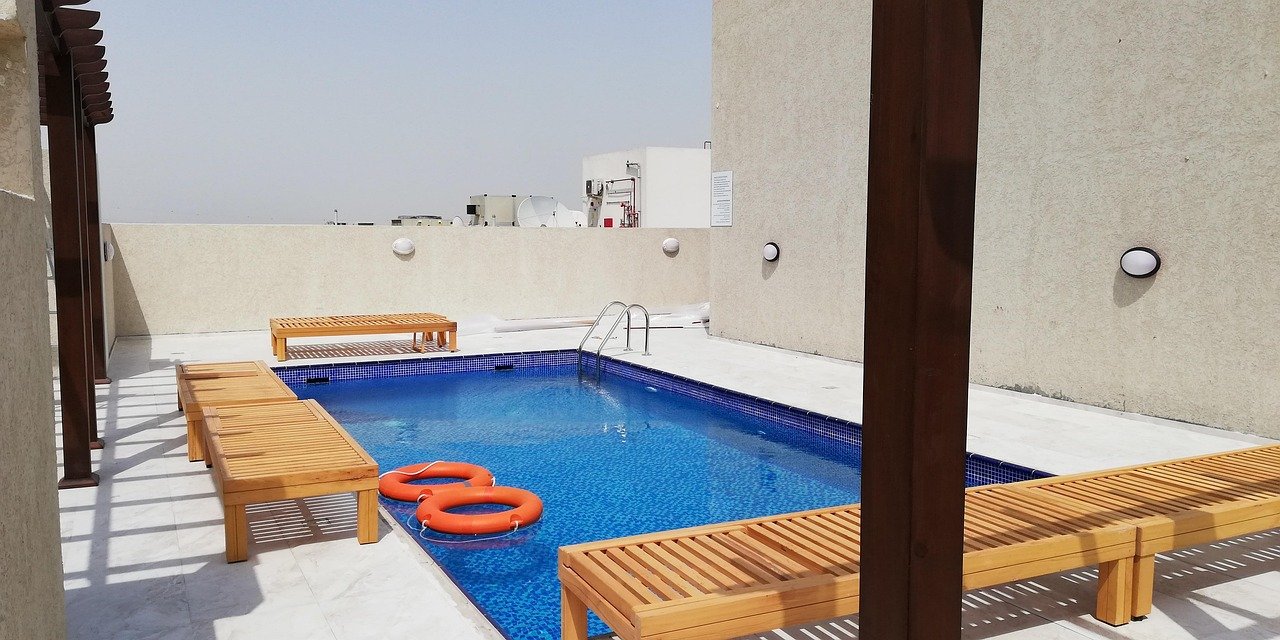Picture this: a sun-drenched afternoon, the laughter of kids splashing in the water, the gentle hum of the filter in the background. This is the dream, right? That pool you invested in is supposed to be a source of joy, a centerpiece for family memories.
But here’s a stark reality that most of us don’t like to think about on a lazy Saturday. In the time it takes to answer a phone call, that same pool can turn from a place of fun into a site of tragedy. Drowning is silent. It’s quick. And it’s often completely preventable.
That’s the uncomfortable truth we need to face head-on. As a homeowner, your pool isn’t just a luxury; it’s a responsibility. The good news? Creating a safe environment isn’t rocket science. It’s about being proactive, understanding the rules of the game, and implementing layers of protection that work together.
So, let’s roll up our sleeves and dive into the ultimate guide to pool safety. This isn’t about scaring you away from your own backyard. It’s about empowering you with the knowledge to relax truly, knowing you’ve done everything possible to protect what matters most.
Why a Pool Safety Inspection is Your Secret Weapon
You get your car serviced. You have a yearly check-up with your doctor. So why on earth would you leave the safety of your pool to chance? A professional pool safety inspection isn’t just a bureaucratic hoop to jump through; it’s one of the smartest investments you can make in your peace of mind.
Think of it as a thorough medical exam for your pool area. A licensed inspector doesn’t just glance at the water. They conduct a forensic-level investigation, looking for the hidden dangers you might walk past every single day.
- They’re Finding What You Can’t See: Is the gap under your fence just a little too wide for a toddler to squeeze through? Is the latch on your gate the type that a curious kid can easily defeat with a stick? These are the minute details that make all the difference. An inspector brings a trained eye to spot the risks you’re blind to.
- It’s the Law, Plain and Simple: Let’s be practical. In most places, including here, regular pool safety inspections aren’t optional. They’re mandated by law. Staying compliant isn’t just about avoiding fines (though that’s a nice bonus); it’s about adhering to a community standard designed to save lives.
- The Ultimate Peace of Mind: There’s a certain weight that lifts off your shoulders when a professional gives your pool area a thumbs-up. That certification is more than a piece of paper; it’s a promise to your family, your friends, and yourself that you’ve created a secure space.
Demystifying the Pool Safety Certificate: More Than Just a Piece of Paper
Alright, let’s talk about the certificate itself. What is it, really? I like to think of a Pool Safety Certificate as the official seal of approval from the safety gods. It’s a legal document issued by a licensed inspector that states, unequivocally, that your pool barrier and safety features meet the specific standards set by your local council.
But when does this piece of paper become critical?
- Selling Your Home: If you’re putting your house on the market, a valid pool safety certificate is often non-negotiable. It removes a huge hurdle for potential buyers and can make your property significantly more attractive.
- Leasing Your Property: Renting out a home with a pool? You absolutely need a current certificate. It protects you from liability and shows your tenants you take their safety seriously.
- The Periodic Check-Up: Even if you’re not selling or renting, some jurisdictions require you to renew your certificate every few years. It’s a built-in reminder to ensure your safety measures haven’t lapsed.
Getting one is a straightforward process, but it requires a proactive mindset. You book an inspection with a licensed professional (folks like Mackay Safety are a perfect example of the experts you’d call). They’ll do their walk-through, provide a report, and once any identified issues are fixed, that certificate is yours. It’s that simple.
Pool Safety Tips You Can’t Afford to Ignore
Inspections and certificates form the legal backbone of pool safety, but the day-to-day responsibility falls squarely on you, the homeowner. This is where we get practical. Safety isn’t a single solution; it’s a series of overlapping layers. If one layer fails, the next one is there as a backup.
Here’s your actionable checklist.
1. The Unbreachable Barrier: Fencing & Gates
This is your first and most important line of defense. The goal is simple: to make unsupervised access to the pool area impossible for children.
- Height & Gaps: Your fence should be at least 1.2 meters high with no gaps at the bottom wider than 100mm (so a young child can’t crawl under).
- The “Climbability” Factor: Avoid horizontal bars or ornate designs that act as a ladder. The surface should be hard to grip and climb.
- The Gate is Key: This is so often the weakest link. The gate must be self-closing and self-latching. And I don’t mean it should close. It must always close, from any position, and latch securely by itself. Test it every week.
2. The Solid Shield: A Safety Cover
A well-fitted, motorized pool safety cover isn’t just for keeping leaves out. When properly secured, it should be strong enough to prevent a child or even an adult from accidentally falling into the water. It’s like putting a lid on a pot—an incredibly effective, physical barrier.
3. The Lifesaving Arsenal: Keep Equipment Handy
You hope you never need it, but it must be there. Within arm’s reach of the pool, you should have:
- A reaching pole
- A life ring with a rope
- A well-stocked, easily accessible first aid kit
Don’t bury this stuff in the garage. Hang it on a fence post. Its visibility alone is a constant safety reminder.
4. The Human Layer: Active Adult Supervision
This is the most crucial, non-negotiable rule. There is no substitute for active adult supervision.
- Designate a “water watcher” during parties—an adult who isn’t distracted by their phone, a book, or a conversation.
- Touch Supervision: For young children or weak swimmers, an adult should be in the water, within arm’s reach, at all times.
- Remember, drowning is silent. You can’t hear it happen from inside the house.
5. The Rule of Law: Establish and Enforce Pool Rules
Clear, simple rules prevent chaos. Post them visibly.
- No running.
- No diving in the shallow end. (Seriously, this one prevents spinal injuries.)
- No swimming without an adult present.
- No glass near the pool.
6. The Ultimate Skill: Learn CPR
If the worst happens, your ability to perform CPR until paramedics arrive can mean the difference between life and death. It’s not a dramatic statement; it’s a fact. Sign up for a class with your family. It’s a skill that extends far beyond the pool.
DIY vs. Professional Pool Safety: A Quick Breakdown
| Aspect | DIY Approach | Professional Partner |
|---|---|---|
| Fence/Gate Check | You can test latches and look for obvious damage. | An inspector uses gauges and knows every clause of the standard you’ve never heard of. |
| Compliance Knowledge | Based on your own online research, which can be outdated or wrong. | Based on current, local legislation and years of practical application. |
| Peace of Mind | “I think it’s safe.” | “I know it’s certified safe.” |
| Liability | You carry the full weight if an accident occurs due to an overlooked flaw. | The inspection and certificate provide a robust layer of legal defensibility. |
The Tangible Benefits of Being a Safety-First Pool Owner
Going through all this effort isn’t just about avoiding disaster—though that’s the primary goal. It comes with some fantastic upsides.
- Accident Prevention: This is the big one. You are statistically eliminating the vast majority of risks that lead to drownings and injuries.
- Enhanced Property Value: A certified, safe pool is a huge selling point. It tells a buyer that the home has been meticulously maintained and that there are no hidden legal or safety headaches.
- True, Unadulterated Peace of Mind: This is what you’re really buying. It’s the ability to host a barbecue, to let your kids play in the backyard, to actually enjoy your investment without a low hum of anxiety in the back of your mind.
Conclusion:
At the end of the day, a pool should be about fun, relaxation, and making memories. That dream is only sustainable if it’s built on a foundation of unwavering safety. It’s not a one-time task, but an ongoing commitment—a blend of sturdy equipment, clear rules, vigilant habits, and professional verification.
Don’t wait for a close call to take action. Be the homeowner who is proactive, not reactive. Review your setup today. Test that gate latch. Book that inspection. Your pool is a wonderful part of your home. Let’s make sure it stays that way.
Frequently Asked Questions
1. How often do I need a pool safety inspection?
It depends on your local council regulations, but generally, you need one when selling or leasing your property. Many areas also require a renewal every one to three years, even if you aren’t moving.
2. Can I perform my own pool safety inspection?
You can and should do regular visual checks of your fence, gate, and equipment. However, a formal inspection for a compliance certificate must be conducted by a licensed pool safety inspector to be legally valid.
3. What is the single most important piece of safety equipment?
There’s no single answer, as layers of protection are key. However, a compliant, self-closing and self-latching gate on a sturdy fence is widely considered the most critical physical barrier. The most critical human element is undivided adult supervision.
4. Are pool alarms effective?
Door/gate alarms and wearable child alarms can be a useful additional layer of protection, alerting you if a child enters the pool area. However, they should never be relied upon as the primary or sole safety measure, as alarms can fail or be disabled.
5. What’s the biggest mistake homeowners make with pool safety?
Complacency. It’s assuming “it won’t happen to me” and letting maintenance slide—like a gate that doesn’t quite latch or a fence panel that gets a little wobbly. The most dangerous hazard is often a relaxed attitude.
6. Do above-ground pools have the same safety requirements?
In most jurisdictions, yes. Any pool that can be filled with water to a depth of 300mm or more must have a compliant safety barrier. The rules apply to in-ground and above-ground pools, and even some large, inflatable pools.

